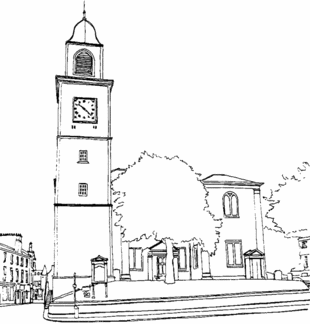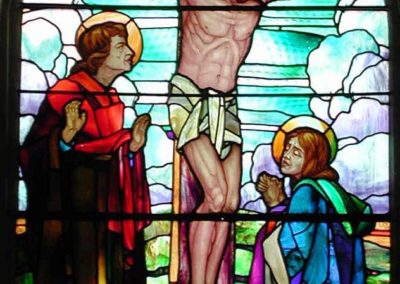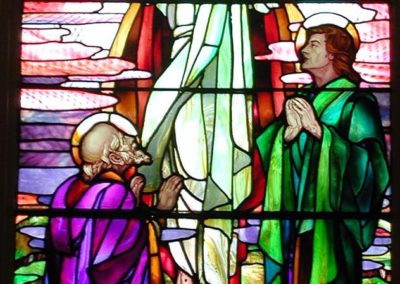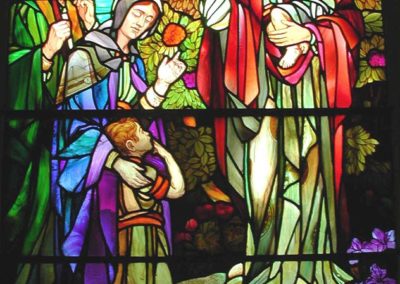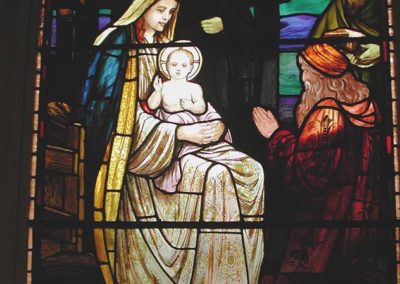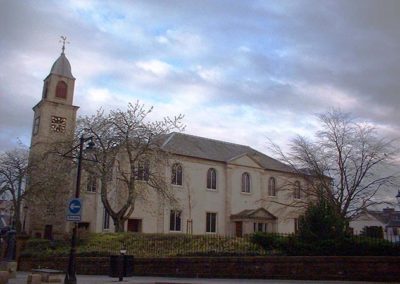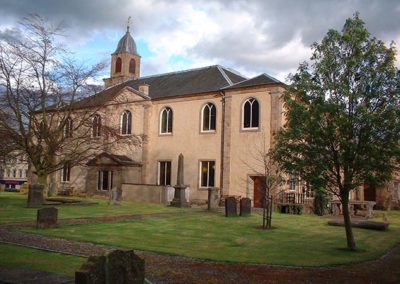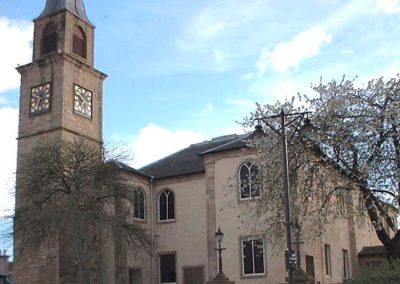New Laigh Kirk, Kilmarnock
Denomination: Church of Scotland
Address: John Dickie Street,
Kilmarnock, KA1 1BL
Local Authority: East Ayrshire
Listing: A
WEBSITE
Church Overview
This church was built in a classical rectangular style in 1802 by architect Robert Johnstone but joined with an earlier tower that dates from the 17th century. Further significant renovations took place in 1903-04 overseen by the firm of Andrew and Newlands.
It comprises of a four stage tower with a two-storey plan church, with a one-storey session house to the rear. The tower, with its clock and bellcast roof and weathevane, is constructed of roughly coursed rubble with ashlar margins, set-offs and cornices and the church is harled and painted with ashlar dressings and a hipped slate roof with square-headed ground floor windows and round-headed first floor windows with Y tracery. The session house is of dressed ashlar and has polished ashlar margins and cornices.
The interior of the church has a classical and spacious plastered interior with ground floor pews and a horseshoe shaped gallery, which is supported by cast-iron Doric columns. It also possesses a collection of wonderful stained glass by artists such as Norman MacDougall (1904), J. T. & C. E. Stewart (1904), William Meikle & Sons (1904, 1906), A. C. Whalen (1973) and Susan Bradbury (1992, 2000).
In the kirkyard outside can be found the gravestones of John Ross, John Shields and John Nisbet, Covenanters who were executed for their role in the Battle of Bothwell Brig, and the grave of Tam Samson, a friend of Robert Burns.
Services
Sunday:11.00am, also 9.30am June to August
Opening Arrangements
Open Monday, Wednesday, Friday and Saturday 12.00 noon-2.00pm or by arrangement
![]()
![]()
![]()
![]()
Disclaimer
The information about churches in Scotland’s Churches Scheme has been provided by the congregations or taken from the Historic Scotland list and published sources, in particular, the Buildings of Scotland volumes and the RIAS Illustrated Architectural Guides. To contact this specific church please complete the Contact this Church form above. The information is not authoritative; please contact Scotland’s Churches Trust to let us know of any errors or omissions.

